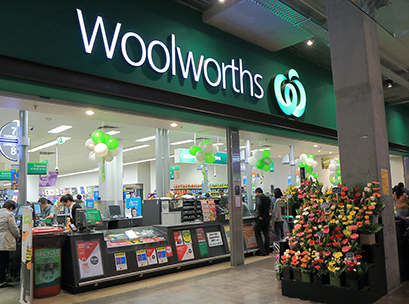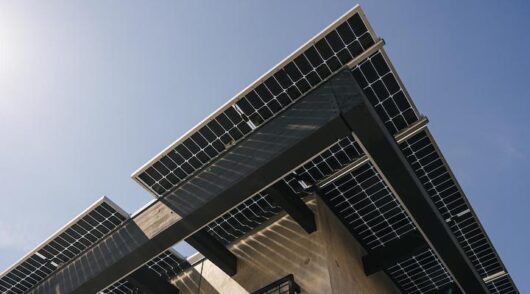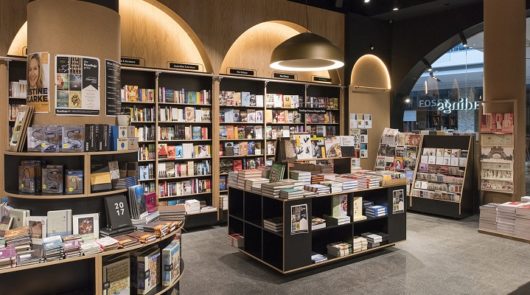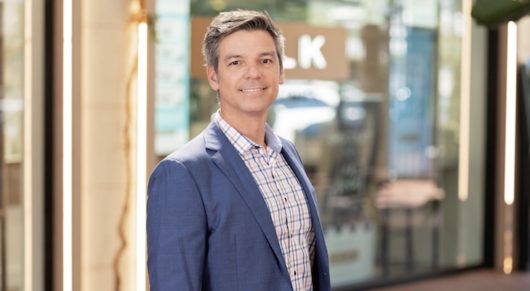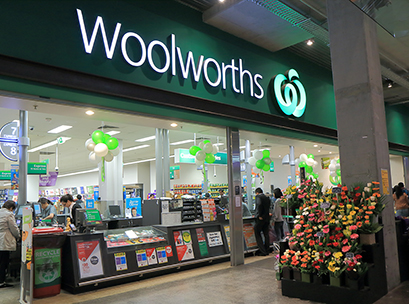 Woolworths is back in the black with a half-year profit of $725.3 million as its crucial comparable food sales have risen in a sign that heavy grocery discounting is winning shoppers back.
Woolworths is back in the black with a half-year profit of $725.3 million as its crucial comparable food sales have risen in a sign that heavy grocery discounting is winning shoppers back.
The supermarket giant’s comparable food sales, which removes one-off events, grew 3.1 per cent in the second quarter and 1.9 per cent for the six months to January 1.
Chief executive Brad Banducci said the number of transactions and items per basket have grown in a sign the group’s strategy is working.
“Sales momentum improved over the half for Australian food with comparable sales in December the strongest for the year driven by strong comparable transaction growth and an improvement in items per basket,” he said.
EBIT declined 13.9 per cent on last year, which Banducci said was primarily impacted by the reinstatement of team incentive payments, team training and higher depreciation from the conglomerates’ renewal and IT investments.
Woolies’ drinks business, Endeavour Drinks Group (EDG), delivered sales growth of 4.0 per cent for the half with all retail formats delivering positive comparable sales growth, boosted by the strong double digit growth from Dan Murphy’s online. “Good cost control, despite the price investment, resulted in a 3.1 per cent increase in EBIT for the half,” said Banducci.
Big W reported a loss before interest and tax of $27.2 million in HY17 with trading EBIT declining 88.9 per cent to $8.1 million and hit by lower comparable sales (-6.3 per cent) during the half. “We are currently reviewing the Big W strategic plan and this will be completed in the next few months,” said Banducci.
Speaking to Inside Retail, Dr Gary Mortimer, associate professor and food retailing expert at QUT Business School, said the conglomerates attention will turn to its ailing discount department store division. “It is the one business they need to fix and while there is commentary that they will divest it I don’t think they will – Woolworths want to have an apparel and general merchandise division, which is essentially a replication of the Wesfarmers model.”
Sales from continuing operations were $29.1 billion, an increase of 2.6 per cent in HY17 driven by higher sales growth in the second quarter in Australian Food, EDG, New Zealand Food and Hotels, offset by lower sales in Big W.
Woolies reported its cost of doing business from continuing operations (CODB) as a percentage of sales increased 102 bps on the prior year to 24.14 per cent, primarily reflecting higher team performance-based bonuses, higher costs associated with new stores and higher depreciation reflecting investment in IT and renewals.

Woolies said “customer price perception is beginning to improve but still presents a major opportunity and reflects our efforts to improve customers’ trust in our prices through lowering shelf prices.”
Mortimer said it’s a positive result, with the move to get rid of businesses that aren’t generating profit and distracting management from the core “engine room which is their food and liquor”, as the right move. “They will become a more agile flexible profitable business,” he said.
“The Coles team will be very conscious of a re-energised and really focused major competitor that will force them to bring about more innovation, focus more on price and I think we will see more price inflation across the market.
“Certainly a reduction in the supply chain and operational costs for profitability in a market where there isn’t a great deal of sales growth, discounting is pushing that sales growth down and the only way you can keep shareholders happy is to deliver on profit and the only way you can do that is cutting costs.
According to IBISWorld research, Woolworths’ focus on its traditional grocery business and the easing of price-based competition have boosted profit and revenue for the retail behemoth over the period.
Main competitor Wesfarmers’ performance over the same period is likely to be less encouraging, with the company recently announcing a drop in both revenue and profit for its Coles supermarket division. Coles’ comparable same store growth has also fallen over the period.
“Woolworths sold its languishing hardware division in 2016 and announced an agreement to sell its fuel business to BP in December 2016,” said Nathan Cloutman, IBISWorld senior industry analyst.
“These factors have highlighted the company’s renewed commitment to its core supermarkets business,” said Cloutman who expects this strategy to continue boosting Woolworths’ competitiveness over the next five years.
Intense price competition between the major players Woolworths and Coles has characterised the supermarkets industry over the past five years, but evidence suggests this trend appears to be easing. Grocery prices have increased slightly in 2017 and prices are expected to remain stable, or rise slightly higher over the rest of the year, according to IBISWorld.
“Price reductions have negatively affected profit margins and supplier satisfaction at a time when challengers to the traditional players, including Costco and Aldi, have also increased pressure on Woolworths and Wesfarmers. As a result, further price reductions have become less viable for the major two players,” said Cloutman.
Higher grocery prices are expected to contribute to increased revenue for the supermarkets industry with forecasts suggesting growth of 3.3 per cent over 2016-17, according to IBISWorld.
Access exclusive analysis, locked news and reports with Inside Retail Weekly. Subscribe today and get our premium print publication delivered to your door every week.

